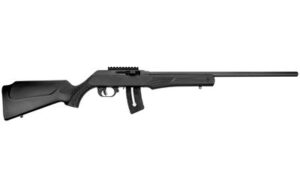Hunting safety protocols Hunting with firearms offers excitement, tradition, and a way to connect with nature—but it also comes with serious responsibility. Every time you head into the field with a rifle or shotgun, safety should be your top priority.
By following key safety protocols, you protect yourself, your hunting partners, and everyone around you. Whether you’re a seasoned hunter or just getting started, it’s essential to practice these habits on every hunt. Hunting safety protocols
Why Firearm Safety Is Critical
Accidents can happen in an instant. Many are caused by a lack of awareness or poor firearm handling. By committing to basic safety rules, you can prevent injuries, property damage, and legal consequences.
Safe hunting builds trust, supports ethical practices, and ensures that hunting remains a respected sport for generations to come.
1. Always Treat Every Firearm as if It’s Loaded
This rule is the foundation of all firearm safety. Never assume a gun is unloaded—check it yourself every time you handle it.
Before loading or unloading:
-
Point the muzzle in a safe direction
-
Open the action
-
Visually and physically inspect the chamber and magazine
Even if someone says it’s empty, verify it for yourself.
2. Keep the Muzzle Pointed in a Safe Direction
Never let your firearm’s muzzle point at anything you don’t intend to shoot. This rule applies at all times—even when walking, climbing, or crossing obstacles.
Key tips:
-
Use a shoulder sling to maintain control
-
Unload before entering vehicles or buildings
-
Avoid swinging the muzzle near other hunters
A safe muzzle direction is one that prevents harm, even in the event of an accidental discharge.
3. Keep Your Finger Off the Trigger Until Ready to Shoot
Rest your finger along the frame, not on the trigger, until your sights are on target. This prevents accidental firing due to sudden movements or loss of balance.
Only place your finger on the trigger:
-
When your target is clearly identified
-
When you’re sure of what’s beyond it
-
When you’re prepared to take a shot
4. Identify Your Target and What’s Beyond It
Positive target identification is essential. Mistaking a hunter for game can have deadly consequences.
Always:
-
Use binoculars or scopes to confirm the animal
-
Look for identifying marks (antlers, color, size)
-
Know what’s behind the target—a bullet can travel far
If there’s any doubt, don’t take the shot.
5. Use the Right Ammunition
Using the wrong ammo for your firearm can cause malfunctions or dangerous blowouts.
Before loading:
-
Double-check the caliber stamped on the barrel
-
Match it to the box of ammunition
-
Inspect each round for damage or corrosion
Never mix different calibers or gauges in your hunting bag. Store them separately to avoid mistakes in the field.
6. Wear Blaze Orange for Visibility
Blaze orange gear increases your visibility and reduces the risk of being mistaken for game.
In most states, blaze orange is required during certain hunting seasons, especially for big game. This includes:
-
Hats or caps
-
Vests or jackets
-
Backpacks with orange panels
Even if your state doesn’t mandate it, wearing blaze orange is a smart and simple safety step.
7. Keep Firearms Unloaded When Not in Use
Unload your gun when not actively hunting or crossing difficult terrain. Store it with the action open to show others that it’s safe.
Unload when:
-
Climbing trees or fences
-
Crossing streams or rough terrain
-
Walking to or from your vehicle
Only load your firearm once you’re in a safe position and ready to hunt.
8. Maintain Safe Distances with Hunting Partners
Establish a clear field of fire with everyone in your group. Know where each person is and agree on safe shooting zones before the hunt begins.
Stick to these rules:
-
Maintain visual contact
-
Use radios or hand signals when needed
-
Never swing your firearm across another person’s position
Good communication saves lives.
9. Handle Firearms with Respect
Never joke around with guns or use them to intimidate. Treat every firearm with the seriousness it deserves.
This means:
-
Regular cleaning and inspection
-
Storing them securely when not in use
-
Keeping firearms locked and unloaded at home
Respect builds safety, and safety builds trust.
10. Educate Yourself and Others
Hunter education courses aren’t just for beginners. Even experienced hunters benefit from refresher courses and updated training.
Encourage younger or newer hunters to take certified classes and model safe habits at all times.
Final Thoughts
Firearm safety is more than a checklist—it’s a mindset. By staying alert, following proven safety protocols, and teaching others to do the same, you protect everyone around you and preserve the future of hunting.
Make safety your first shot every time you step into the wild.
👉 Looking for safe, reliable hunting firearms and accessories?
Explore our trusted selection at Atlantic Outdoor Guns—where quality meets responsibility.
Shop Now and hunt with confidence.




No comment